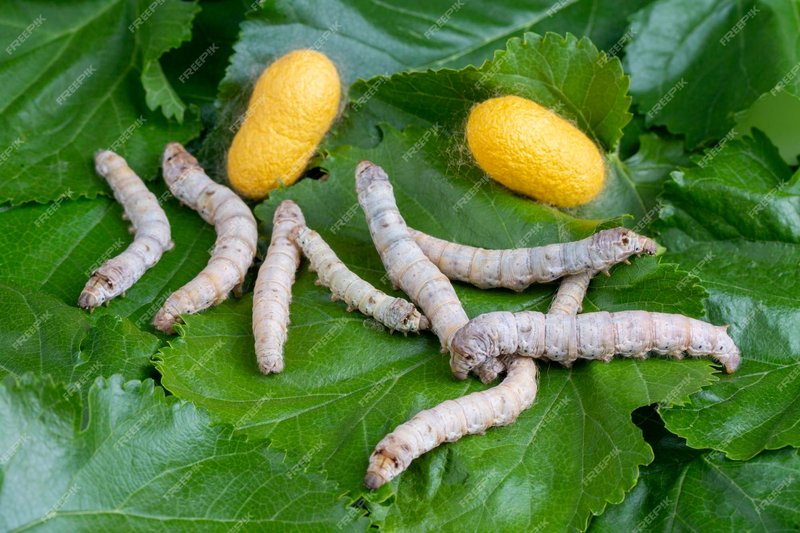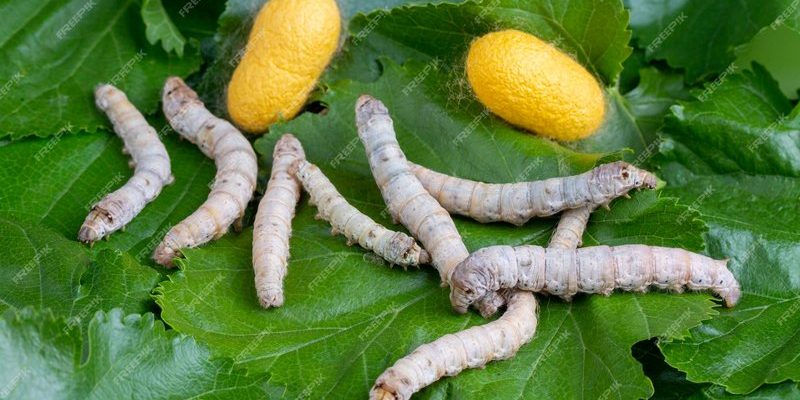
Imagine if we could have our cake and eat it too—enjoying silk while also respecting the lives of the silkworms that produce it. This is where innovative ideas come into play. Today, I want to walk you through the process of silk extraction while highlighting some practices that prioritize the well-being of silkworms. Trust me, it’s more interesting than it sounds!
Understanding Silkworms and Silk Production
Silkworms, or *Bombyx mori*, are the larvae of the moth that produces silk. These tiny creatures feed on mulberry leaves and undergo several stages of growth before entering the pupal stage. During this time, they spin a cocoon for protection, made from a single silk thread that can be over a mile long. That’s quite a feat when you think about it!
Traditionally, silk was harvested by boiling the cocoons to extract the silk fibers. This method, unfortunately, resulted in the death of the moths inside. But here’s the thing: many people are now looking for ways to collect silk that respects the life cycle of these moths. It’s all about finding a balance between our love for beautiful fabric and compassion for the creatures that produce it.
The Need for Alternative Silk Extraction Methods
As awareness of animal rights grows, so does the demand for cruelty-free products. Many consumers are searching for ethically sourced materials, and the fashion industry is taking note. This shift is influencing how silk is produced.
One alternative approach is the use of “peace silk,” or “Ahimsa silk.” This method allows silkworms to emerge from their cocoons naturally, rather than being boiled. It’s like giving them a second chance at life while still being able to collect the silk. This process requires patience and care, but it’s a beautiful way to respect nature.
The Process of Extracting Silk Without Harming Moths
So how does this peaceful extraction work? Let’s break it down step by step.
1. Cocoon Collection: The first step involves collecting the cocoons after the silkworms have spun them. Instead of boiling them immediately, they are carefully gathered and placed in a controlled environment.
2. Waiting for Emergence: Instead of rushing the process, farmers allow the silkworms to complete their life cycle. Once they’ve transformed into moths, they can break free from the cocoon using their wings. This can take about 10 days, but it’s well worth the wait.
3. Harvesting the Silk: After the moths have emerged, farmers can collect the leftover cocoons. These cocoons may be a little messier but are still valuable for silk production. The silk fibers are then carefully unraveled and spun together to make fabric.
This method not only respects the moths but also offers a unique texture and feel to the silk, making it a popular option for eco-conscious consumers.
Comparing Traditional vs. Peace Silk
Here’s a quick comparison of traditional silk and peace silk:
| Feature | Traditional Silk | Peace Silk |
|---|---|---|
| Impact on Moths | Involves boiling | Moths are allowed to emerge |
| Production Time | Faster | Longer |
| Fabric Texture | More textured and unique | |
| Price | Generally cheaper | Typically higher due to careful process |
You can see that while peace silk takes a bit longer and might cost more, it aligns with the values of many modern consumers who want to support ethical practices.
The Environmental Benefits of Ethical Silk Production
You might be wondering, *why does it matter if we harm silkworms or not?* Well, ethical silk production has impactful environmental benefits as well. Many of the practices associated with cruelty-free silk align with sustainable farming techniques.
– Biodiversity: By allowing silkworms to emerge as moths, farmers contribute to the local ecosystem, which helps maintain biodiversity. This is crucial for the health of our planet.
– Less Chemical Use: Ethical silk farming often minimizes the use of harmful chemicals that could hurt both the moths and the surrounding environment. This means cleaner air, water, and soil.
– Sustainable Practices: Many peace silk producers embrace sustainable farming methods that help replenish the soil and reduce waste. This approach supports both the environment and the farmers who rely on it.
Challenges in Ethical Silk Farming
While the idea of ethical silk production is beautiful, it also comes with its own set of challenges.
First, there’s the cost. Peace silk is generally more expensive due to the longer production time and careful methods used. This can make it less accessible for some consumers.
Next, there’s market demand. As more people seek cruelty-free products, the industry must scale responsibly to meet that demand without compromising quality. It’s a balancing act that requires innovation and dedication.
Finally, effective education about these methods is essential. Many consumers still don’t realize that silk can be produced without harming moths. Raising awareness can help shift buying habits and promote ethical choices.
Where to Find Ethical Silk Products
If you’re interested in trying peace silk, you’re in luck! Many brands are stepping up to offer these ethical options. Here are a few places to check out:
- Local Artisan Markets: Look for local artisans who specialize in ethical silk products. You might find unique items that tell a great story!
- Online Retailers: Websites dedicated to sustainable fashion often carry peace silk. Search for keywords like “ethical silk” or “Ahimsa silk.”
- Eco-Friendly Brands: Some well-known brands have committed to using only peace silk in their collections. A little research goes a long way!
When you choose peace silk, you’re not just adding to your wardrobe—you’re also supporting a kinder, more sustainable approach to fashion.
Silkworm silk extraction without harming moths is not just about creating beautiful fabric; it’s about embracing a compassionate choice. As we become more aware of our purchasing decisions, we have the power to drive change. By choosing peace silk, we can enjoy the luxury of silk while also taking care of the world around us.
Next time you admire that shimmering silk scarf or luxurious silk dress, remember the journey it took to get there. It’s a process that can respect the lives of these amazing little creatures. Let’s support ethical practices and make a difference, one silk thread at a time!

